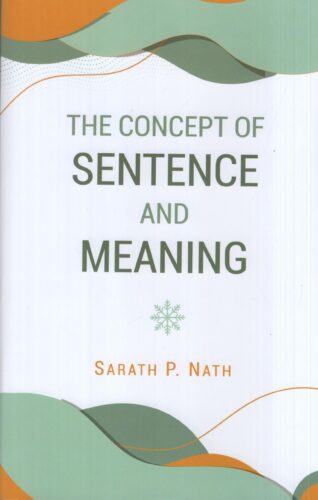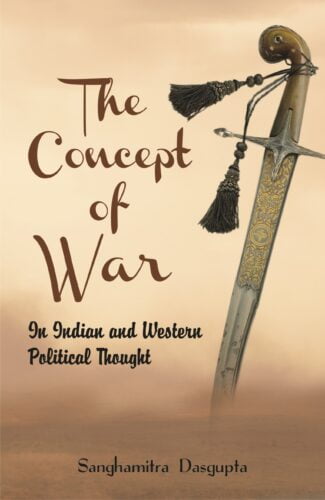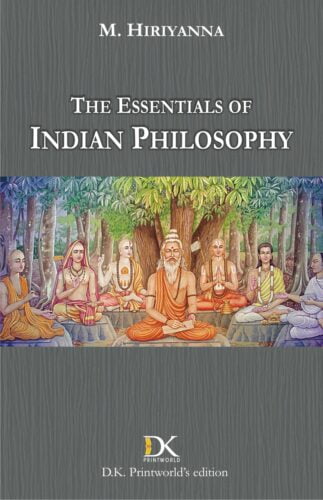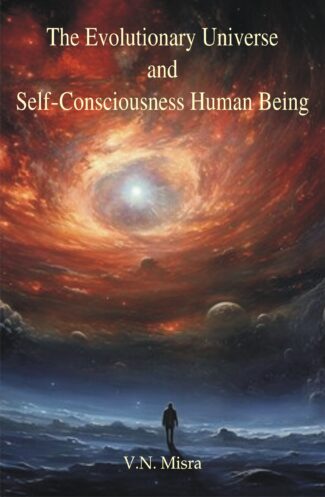Showing 991–1000 of 1173 results

This book introduces Aryabhata and the Aryabhatiya to the new generations through an authentic English translation. It discusses Aryabhata as an innovator and the findings of Aryabhata on dashagitika, ganitapada, kalakriya and gola in great details, endorsing it as quite a genuine work.
The Aryabhatiya of Aryabhata is of great work in the annals of the history of Indian mathematics and astronomy. This volume is expected to give a complete translation (with notes) of the Aryabhatiya with references to some of the most important parallel passages. It is a brief descriptive work intended to supplement matters and processes which are generally known and agreed upon to give only the most distinctive features of Aryabhatas own system. Many common places and many simple processes are taken for granted.
The book vividly addresses topics such as dashagitika, ganitapada, kalakriya and gola in much details. Withstanding many a criticism from people like Brahmagupta on the theories of Aryabhata, this volume through the introductory chapter contends that the Aryabhatiya, on the whole, is quite genuine. It presents Aryabhata as an innovator, thus his difference from Smriti or tradition in his approach to many astronomical matters is fully justified. It also discusses a serious internal discrepancy in the Aryabhatiya about the stationary and revolutionary nature of earth.
This book helps in introducing Aryabhata and the quintessential of Aryabhatiya to the mathematicians and astronomers of the new generations, for whom the original language Sanskrit and the old processes might be unknown.

This book is a journey into that charmed and beautiful mind from which has arisen concepts and ideas, forms and textures, words and music, movement and stillness, philosophy and worship. myths and their celebrations.
It is through the Indian aesthetic mind and its concepts of the beautiful that the Indian civilization can be best understood, for in that mind are pages of history and voices of the past, in it will be heard the sounds of our dancers and in it will be seen the colours of our fabrics, it is a mind which treasures the aroma of the earth for in it we shall find terracotta figures that will whisper stories of times gone by. In that ancient mind silent stones will speak of sthapatis who not only built temples but also havelis, in that very mind rivers will whisper of saints who meditated on its banks and also of mountains which will beckon us to caves where truth was discovered, in that pristine mind stars will talk to us of astronomers who counted them, in that radiant mind we will meet scribes who created beautiful manuscripts and painters who immortalised our gathas and kathas through their kalam.
This book is a journey into that charmed and beautiful mind from which has arisen concepts and ideas, forms and textures, words and music, movement and stillness, philosophy and worship. myths and their celebrations.
The book is lavishly illustrated and is a visual delight.
Indisputably one of the world’s best-known books, the Bhagavadgita embodies the quint-essence of classical Upanisadic philosophy, presented in the form of a dialogue between Krsna, the archetypal teacher, and Arjuna, the archetypal human being caught in the grip of a monumental crisis. For anyone like Arjuna who has ever paused to ponder the meaning of life, the work is as relevant today as it was when it was written.
By stripping away the manifold biases — both subtle and obvious — that have colored other commentaries, Guru Nitya has uncovered the perennial philosophy at the heart of this great classic. In an original, easy to understand format, his commentary divides each of the Gita’s eighteen chapters into three sections: the first elucidating the basic concepts involved; the second including Sanskrit text in Roman script along with the English meaning of each word or phrase and Nataraja Guru’s lucid and revolutionary English translation; and the third carrying explanatory notes and comments in the form of a dialogue between a teacher and student.
The breakthrough of this interpretation of the Gita is in its transcendence of sectarian dogma to reveal the work as a fully developed scientific psychology, whose keen insights and vivid reasoning can be readily appreciated by the twenty-first-century mind.
This book, “The Buddhivilasini: Commentary of Ganesa Daivajna on the Lilavati of Bhäskaracarya II” is a version of the thesis, for which Dr V. Ramakalyani has been awarded the degree of Doctor of Philosophy by the University of Madras in 2018. Among the published commentaries on Lilavati, Buddhivilasini stands out for its characteristic treatment of the original work as Buddhivilasini contains more than hundred upapattis (Indian proofs) for almost all the rules of Lilavati. In the context of Buddhivilasini, upapatti is either a description of the process, numerical demonstration thereof, verbal explanation, reasoning utilising algebraic rules, proportion, examples or justification. This book consists of nine chapters. First chapter introduces the background relating to Indian contribution to mathematics. Second to eighth chapters consist of study of the upapattis on parikarmastakam (eight operations on arithmetic, fractions and zero), prakirnakas (miscellaneous units), misra-vyavahara (investigation of mixed units) sredha-vyavahara (progressions), Ksetra-vyavahara (geometry), Itara-vyavahara dealing with the khata (volume of excavations), citi (stacks), rasi (mound of grains) and chaya (shadows and gnomon), kuttaka (an indeterminate equation of degree one) and ankapasa, dealing with combinatorics. The translation of the passages in Buddhivilasini and explanations in modern notations are given with valuable remarks. Ganesa’s contribution to mathematics, style of commenting and his erudition are discussed in the last chapter. Six appendices, bibliography and index are given at the end. On the whole this is a valuable contribution to the historiography of mathematical literature in Sanskrit.

The book systematically presents the philosophical dimensions of grammatical units. The author has attempted to present the philosophy of language in a Bhart¦harian perspective. To substantiate his views, syntactic and semantic thoughts in India are elaborately discussed.
Definition and sense of the “meaning” were a great concern for the Indian thinkers. In order to finalize this, they have examined all the components of a communicative unit such as syllables, words, sentences and intentions of the speakers. After this examination, different philosophers, specifically, Mimamsakas, Naiyayikas and Shabdikas have arrived at the conclusion that sentence is an essential component to convey the sense of meaning to the listener. The theory of akhandavakya is based on the indivisible sphota theory and the sentence-meaning is experienced by the concept of pratibha. The division of sentence as per the priority of words occurred on the basis of mutual expectancy by which the intended meaning may be assumed by the listener.
The Vakyapadiya of Bhartrihari (sixth century) is a text which elaborately explains the notions on sentence. The book systematically presents the philosophical dimensions of grammatical units. The author has attempted to present the philosophy of language in a Bhartriharian perspective. To substantiate his views, syntactic and semantic thoughts in India are elaborately discussed.
Though the significance of the work can only be understood by those scholars who are well versed in Helaraja and Punyaraja, it will, undoubtedly, remain an asset to the field of grammatical deliberations.

The book explains the nature of war, its socio-economic and political aspects from the Vedic and Western perspectives, and how the moral and social ethical concepts are related pragmatically to the issue of war. The author echoes serious concerns about the ways by which the present-day global majors approach war.
War makes life miserable for both the parties involved, the invader and the invaded. No war is fought without losing men and material, stripping off societal life and political order. Simultaneously it contributes to the progress of the society and preserves the liberty and honour of a state. From the Vedic period of India and the epic period of Greece, we have records of wars, and deliberations on the logic, philosophy, politics, ethics, strategies (pre- and post-war) of war, and the ways of reconstructing the war-ravaged societies, paving the way for drastic social and economic changes.
This volume scans the Indian and Western views and approaches on war in the ancient and modern times. To understand the concept of war in ancient period, it analyses Rigveda, Manusmriti, Ramayana, Mahabharata and Arthasastra from the Indian parlance and the philosophies of Plato and Aristotle from the Western perspectives. It also makes an in-depth study on the war philosophies of modern Indian leaders like Mahatma Gandhi, Sri Aurobindo, Vinayak Damodar Savarkar and S. Radhakrishnan, and Western philosophers like John Locke, Immanuel Kant, Georg Friedrich Hegel and Bertrand Russell.
The book also explains the nature of war, its socio-economic and political aspects, and how the moral and social ethical concepts are related pragmatically to the issue of war. The author echoes serious concerns about the ways by which the present-day global majors approach war.

This volume deliberates on the “essentials” of Indian philosophy allowing one to peruse, analyse and absorb its crux. It has set its focus on the history of Indian philosophy starting from the course of Vedic religion, its transition to the prominent systems, its intake from the non-Vedic schools of thought, and the details and analysis of NyÀya-VaieÈika, SÀÚkhya-Yoga, PÂrva-MÁmÀÚsÀ, and VedÀnta from both an absolutistic and a theistic approach.
As the title indicates, this volume deliberates on the essentials of Indian philosophy allowing one to peruse, analyse and absorb its crux. It has set its focus on the history of Indian philosophy starting from the course of Vedic religion, its transition to the prominent systems, its intake from the non-Vedic schools of thought, and the details and analysis of NyÀya-VaieÈika, SÀÚkhya-Yoga, PÂrva-MÁmÀÚsÀ, and VedÀnta from both an absolutistic and a theistic approach. The book portrays the authentic chronological limits of these systems, disagreeing many a theory and study. Its in-depth but concise and connecting account of Indian philosophical systems has vivid interpretations and daunting criticisms. A historical survey accompanies each natural division of the subject along with its theory of knowledge, ontology and practical teaching. It makes one grasp the fundamentals of Indian philosophy at ease and navigate further to its nuances across a vide spectrum of readers.

This volume deliberates on the “essentials” of Indian philosophy allowing one to peruse, analyse and absorb its crux. It has set its focus on the history of Indian philosophy starting from the course of Vedic religion, its transition to the prominent systems, its intake from the non-Vedic schools of thought, and the details and analysis of NyÀya-VaieÈika, SÀÚkhya-Yoga, PÂrva-MÁmÀÚsÀ, and VedÀnta from both an absolutistic and a theistic approach.
As the title indicates, this volume deliberates on the essentials of Indian philosophy allowing one to peruse, analyse and absorb its crux. It has set its focus on the history of Indian philosophy starting from the course of Vedic religion, its transition to the prominent systems, its intake from the non-Vedic schools of thought, and the details and analysis of NyÀya-VaieÈika, SÀÚkhya-Yoga, PÂrva-MÁmÀÚsÀ, and VedÀnta from both an absolutistic and a theistic approach. The book portrays the authentic chronological limits of these systems, disagreeing many a theory and study. Its in-depth but concise and connecting account of Indian philosophical systems has vivid interpretations and daunting criticisms. A historical survey accompanies each natural division of the subject along with its theory of knowledge, ontology and practical teaching. It makes one grasp the fundamentals of Indian philosophy at ease and navigate further to its nuances across a vide spectrum of readers.

The book elucidates scientifically and philosophically the evolutionary universe (brahmāṇḍa) and the self-conscious human being (piṇḍa). This universe came into form about 14-13.7 billion years ago and has undergone perpetual changes including life on earth some 3.9 billion years ago. Man’s self-conscious evolution is driven by his intellectual growth and philosophical wisdom.
The book elucidates scientifically and philosophically the beginning of the evolutionary universe (brahmāṇḍa) and the intellectual growth of self-conscious human being (piṇḍa), the former is “out” there and the latter is “out” here. Without the latter, the former is difficult to be perceived or known. Going by the scientific cosmology, this universe came into form about 14-13.7 billion years ago as a result of Big Bang, and has undergone perpetual changes including life on earth some 3.9 billion years ago. Man’s self-conscious evolution is driven by his intellectual growth and philosophical wisdom. It has been studied both from the Indian and Western philosophic perspectives.
The philosophical wisdom in this regard is in sync with many modern scientific concepts. The Sāṁkhya–Yoga philosophy is embodied with the concepts of sattva, rajas and tamas. These three are in a sense comparable to the proton, the electron and the neutron of modern science. The proton provides the coalescence or the form of the atom; the electron gives us energy and proton provides the mass. Some other Indian philosophical systems like Vaiśeṣika, Advaita Vedānta and Bauddha are replete with similar scientific approaches. So also are the studies of Western philosophers like Immanuel Kant, David Hume, Niels Bohr and David Bohm. All the things are happening within the time and space.

This volume combines the study of primary sources on Shakta Tantra with the investigation of living interpretations of these sources by contemporary Nepalese practitioners. It is twenty-year analysis on a specific Tantric tradition Shri Vidya a specific deity Tripurasundari a specific text Nityashodashikarnava and a specific set of initiates within a specific locale the Kathmandu Valley.
In this groundbreaking study on Sarvamnaya Shakta Tantra in Nepal, Jeffrey S. Lidke combines the study of primary sources with the investigation of living interpretations of these sources by contemporary Nepalese practitioners. Lidke focuses his twenty-year analysis on a specific Tantric tradition Shri Vidya a specific deity Tripurasundari a specific text Nityashodashikarnava and a specific set of initiates within a specific locale the Kathmandu Valley.
This emphasis on specificity enables the author to contextualize his study within the unique Nepalese historical and sociocultural context, and thereby to represent Sarvamnaya Shakta Tantra not as a static, universal ism present in a single form throughout the subcontinent, but as a dynamic place-specific tradition reflecting the nuanced ways that peoples and institutions shape their religious traditions according to the power negotiations that arise in Tantric worlds in which individuals imagine they can be like the gods they worship.
The central symbol that drives these negotiations in Nepal is the mandala, a pan-Tantric instrument of worship by which Tantric practitioners be they kings, commoners, artisans or warriors navigate, imagine and identify with the territories in which they live and strive to obtain their mundane and spiritual aims.
The mandalas ubiquitous presence is found not just overtly in city designs, temple architecture and a seemingly infinite array of artistic representations (including sculpture, painting, music and dance) but also covertly in the secret rituals and meditation practices of initiates at all levels of Nepalese society, ranging from lower caste girls to the former kings of Nepal.
| There are no products |